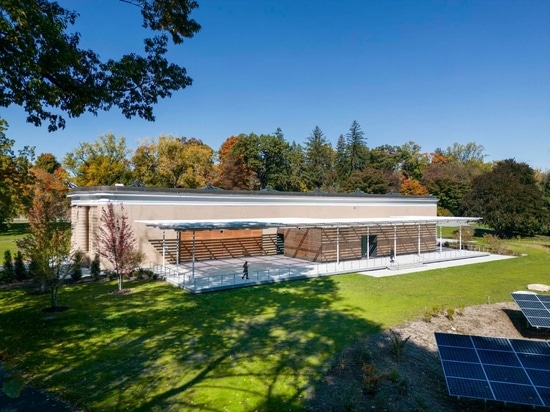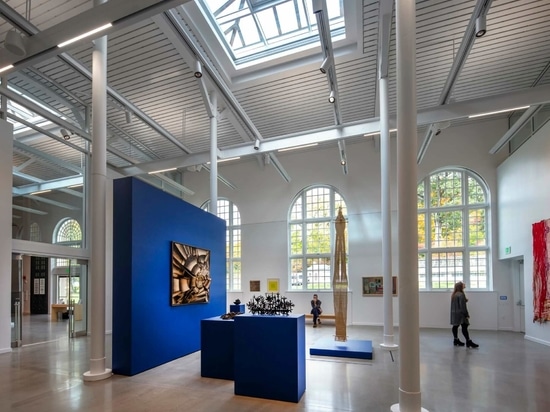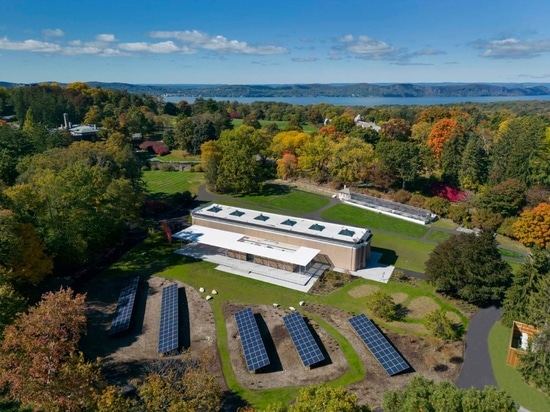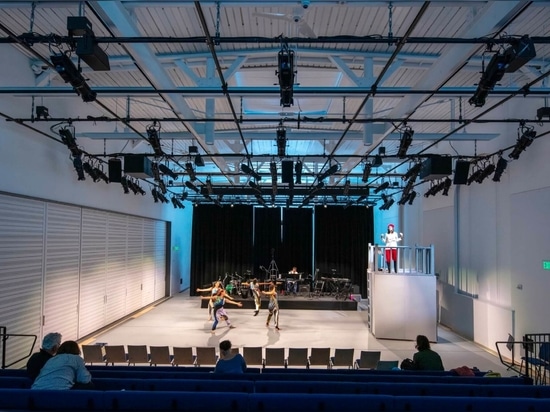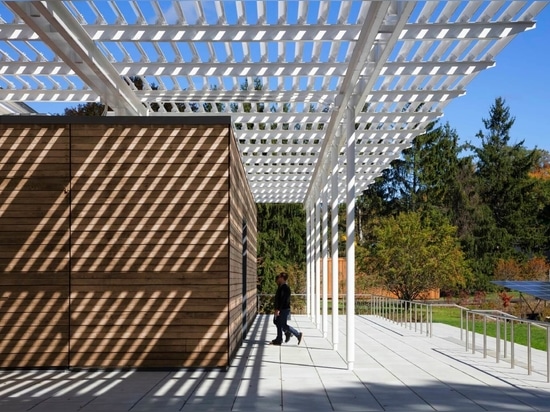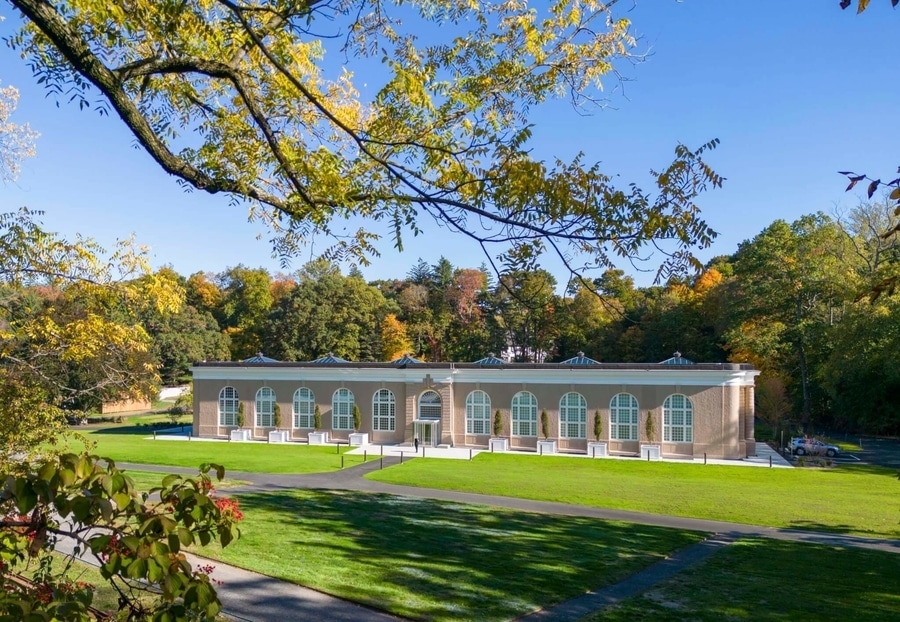
#PUBLIC ARCHITECTURE PROJECTS
FXCollaborative revamps the Rockefellers’ Orangerie into a high-performance arts center
In 1908, John D. Rockefeller hired William Welles Bosworth to design a winter storage facility for his orange trees, which Bosworth modeled on the Orangerie at Versailles.
Rockefeller’s Beaux Arts Orangerie was built on the family’s Hudson Valley estate, and was turned over to the National Trust for Historic Preservation in 1979 along with other historic buildings on the estate. In agreement with the National Trust, the buildings were turned into the Rockefeller Brothers Fund (RBF)-run Pocantico Center, a destination for arts and educational programs.
As AN reported in 2019, the RBF announced plans to turn the Orangerie into a public arts venue. FXCollaborative was brought on to shepherd the building’s adaptive reuse, and design a small expansion. Brandon Massey, senior associate at FXCollaborative told AN that conversations with the client, alongside the National Trust for Historic Places’ guidelines, determined that the north, east, and west facades should be preserved as they were integral to Bosworth’s design. The unadorned south facade was designed to radiate heat to the orange trees. Large sections of the facade were damaged from years of ivy growth, and other aspects, like the historic windows, were beyond preservation.
The historic facade was finished with pebble dash, a stucco mixed with “a pea sized round aggregate” that was applied to the terra-cotta block wall with a trowel, which “flattens and flows down the wall it develops a unique texture that accentuates the aggregate,” as Massey described. FXCollaborative worked with preservation consultant Li-Saltzman Architects to mock up an aggregate mix that matched the existing facade material.
A row of 10 large windows on the north facade were “in serious disrepair,” Massey said, and had to be replaced. The design team studied “window composition, operation, glazing, and installation methods” before workers removed the dilapidated windows so that they could work closely with fabricators to retain the windows’ “overall aesthetic and character.” The new windows provided an opportunity for performance upgrades, including double glazing, steel reinforcements, and up-to-date weatherizing.
On the interior, overhauls to the building’s layout incorporate gallery and performance spaces into the structure, including telescopic seating for 195 people. White walls and ceilings, which were revamped as part of the building’s reuse, make for a bright interior given the amount of natural light the building receives. In addition to the 10 windows on the north facade, the dismantling of sections of the original south facade allowed for the addition of a small pavilion, with new, wood-clad operable wall sections opening the interior to the estate’s grounds.
Environmental targets shaped much of the design team’s approach, which include a net-zero energy goal. This “relies heavily on the photovoltaic panels for energy production,” Massey told AN. Beyond the addition, an array of photovoltaic panels forms the base of the building’s approach to energy efficiency. In the envelope, the design team opted to double insulate the interior face of the building’s exterior walls with staggered metal studs. “Against the masonry wall,” Massey explained, “the stud cavity is filled with open cell spray foam, then a layer of smart vapor barrier creates a liner to mitigate moisture. The second stud wall allows for infrastructure, running behind the wall and holding a double layer of plywood for art work installation.”
The building’s wood-framed structure was reinforced through sistering beams, and joist pockets were insulated with mineral wool. A new slab was poured, which was insulated from below. The design team chose to insulate the new roof deck with rigid poly-iso foam insulation, rounding out the envelope’s overhaul.
In addition to the technical intricacies of working these systems into an existing structure, FXCollaborative approached the project with an aim to reduce its carbon load. In addition to the inherently carbon-economical approach to reusing an existing building, concrete was specified to contain no less than 60 percent fly ash in the foundation walls and 40 percent fly ash in the slabs. Partially substituting fly ash for cement in concrete mixes can significantly reduce embodied energy consumption and total carbon footprint.
FXCollaborative is currently working with sustainability consultants to conduct a post-construction embodied carbon review, which should inform both the client and design team on the building’s performance relative to baseline construction standards that could have otherwise been pursued.
